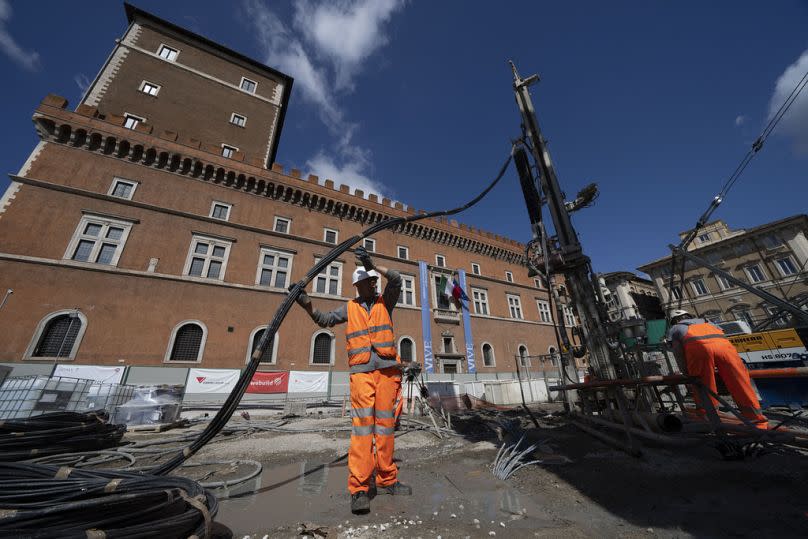Work on metro line under Rome's landmarks enters crucial phase

A long-delayed and complex project to bring a metro line under Rome's historic centre and through some of its most iconic sites has entered an important phase.
When completed, the metro line will run underneath some of the world’s most important cultural heritage sites — the Colosseum, Trajan’s Column and the Basilica of Maxentius, the largest building in the Roman Forum — as well as some of Rome’s prized Renaissance palazzi, churches and the Vatican.
During a tour Thursday of the construction site at Piazza Venezia, chief engineer Andrea Sciotti said work on the nearly €3-billion project is considered one of the most complicated of its kind in the world.
An 85-metre-deep retaining wall has been built around the flagship station in front of the imposing National Monument to Vittorio Emanuele II, commonly known as Vittoriano.
The project was likely to be completed by 2034, he added.
The Metro C line has already been in the works for two decades but has been slowed by bureaucratic and funding delays. The archaeological excavations necessary given the underground ruins of Imperial Roman and Medieval civilisations remain the key obstacle in the metro line's way.

Italy’s culture ministry has been heavily involved in the project and will be on hand once the digging begins on the initial 15 metres of the Piazza Venetia station.
“I think I can say it’s unique in the world because we don’t only have the Colosseum and the Basilica of Maxentius, but we have 15-20 metres of hidden archaeological patrimony -– known but hidden,” Sciotti told reporters at the site. “This obviously brings problems that must be resolved in the planning and realization phases.”
Rome unveils plans for a new archaeological path through the heart of city
How scientists reconstructed a huge statue of Emperor Constantine the Great in Rome
To underscore the delicacy and uniqueness of the Piazza Venezia hub, Sciotti noted that in the 10 years and €755 million it will take to dig and build the station, four other stations will be built along the Metro C line heading out of the centre toward the Vatican and beyond.
“Twenty, thirty years ago, it would have been very difficult to do this,” he said. But thanks to new technology, it’s now possible to both dig underneath archaeological sites and protect above-ground patrimony, he said.
While Rome already has two main metro lines, including one with a stop at the Colosseum, the Metro C line will enter the heart of the historic centre and connect it to the Vatican and beyond, providing new options for the Eternal City’s chronically lacking public transport system.

